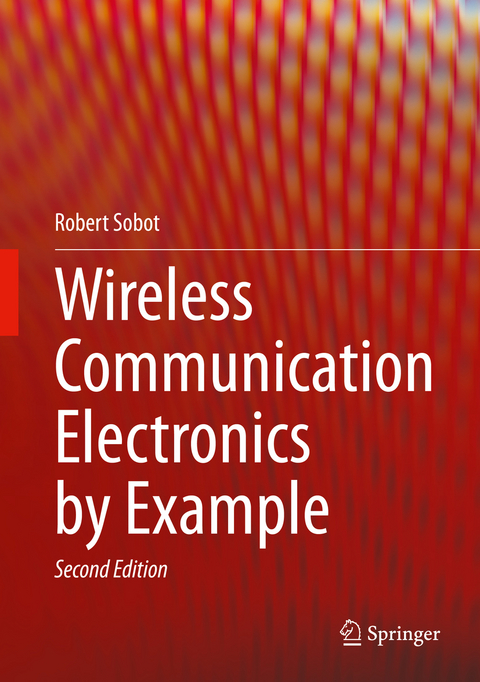
Wireless Communication Electronics by Example
Springer International Publishing (Verlag)
978-3-030-59497-8 (ISBN)
This book is intended for senior undergraduate and graduate students as well as practicing engineers who are involved in design and analysis of radio frequency (RF) circuits. Fully-solved, tutorial-like examples are used to put into practice major topics and to understand the underlying principles of the main sub-circuits required to design an RF transceiver and the whole communication system.
Starting with review of principles in electromagnetic (EM) transmission and signal propagation, through detailed practical analysis of RF amplifier, mixer, modulator, demodulator, and oscillator circuit topologies, as well as basics of the system communication theory, this book systematically covers most relevant aspects in a way that is suitable for a single semester university level course. Readers will benefit from the author's sharp focus on radio receiver design, demonstrated through hundreds of fully-solved, realistic examples, as opposed to texts that cover many aspects of electronics and electromagnetic without making the required connection to wireless communication circuit design.
- Offers readers a complete, self-sufficient tutorial style textbook;
- Includes all relevant topics required to study and design an RF receiver in a consistent, coherent way with appropriate depth for a one-semester course;
- Uses hundreds of fully-solved, realistic examples of radio design technology to demonstrate concepts;
- Explains necessary physical/mathematical concepts and their interrelationship.
Robert Sobot received the B.Sc. degree in engineering physics from the University of Belgrade, ex-Yugoslavia, in 1989, and the M.A.Sc. and the Ph.D. degrees in electrical engineering from Simon Fraser University, Canada, in 1996 and 2005 respectively. In September 2014 he joined ENSEA in France as a Full Professor. From 2006 to 2015 he was with Western University in Canada as an Associate Professor, now he is an Adjunct Professor. From 1996 to 2001 he was with PMC-Sierra Inc., Canada, where he was leading projects in analog IC design. During 2012/14 he was invited researcher at the University Pierre et Marie Curie at Sorbonne (LiP6), Paris, France. Since 2010 he authored two textbooks on the topic of Wireless Communication Electronics, and he established the Implantable System Laboratory (ISL) at Western University in Canada that is dedicated to research related to wireless implantable telemetry systems.
Part I. Basic concepts and Definitions.- Chapter 1. Engineering mathematics.- Chapter 2. Introduction.- Chapter 3. Basic behavioural and device models.- Chapter 4. Multistage Interface.- Chapter 5. Basic Semiconductor Devices.- Chapter 6. Transistor Biasing.- Chapter 7. Review of Basic Amplifiers.- Chapter 8. Introduction to frequency analysis of amplifiers.- Chapter 9. Electrical Noise.- Part II. Radio receiver circuit.- Chapter 10. Radio receiver architecture.- Chapter 11. Electrical Resonance.- Chapter 12. Matching Networks.- Chapter 13. RF and IF Amplifiers.- Chapter 14. Sinusoidal Oscillators.- Chapter 15. Frequency Shifting.- Chapter 16. Modulation.- Chapter 17. AM and FM Signal Demodulation.- Chapter 18. RF Receivers.
| Erscheinungsdatum | 25.12.2020 |
|---|---|
| Zusatzinfo | XVI, 394 p. 313 illus., 260 illus. in color. |
| Verlagsort | Cham |
| Sprache | englisch |
| Maße | 178 x 254 mm |
| Gewicht | 969 g |
| Themenwelt | Mathematik / Informatik ► Informatik ► Theorie / Studium |
| Technik ► Elektrotechnik / Energietechnik | |
| Technik ► Nachrichtentechnik | |
| Schlagworte | Communication Electronics • Communication Electronics Textbook • Radio Communications • Radio Engineering • Radio Engineering Textbook • RF Circuit Design |
| ISBN-10 | 3-030-59497-1 / 3030594971 |
| ISBN-13 | 978-3-030-59497-8 / 9783030594978 |
| Zustand | Neuware |
| Haben Sie eine Frage zum Produkt? |
aus dem Bereich


